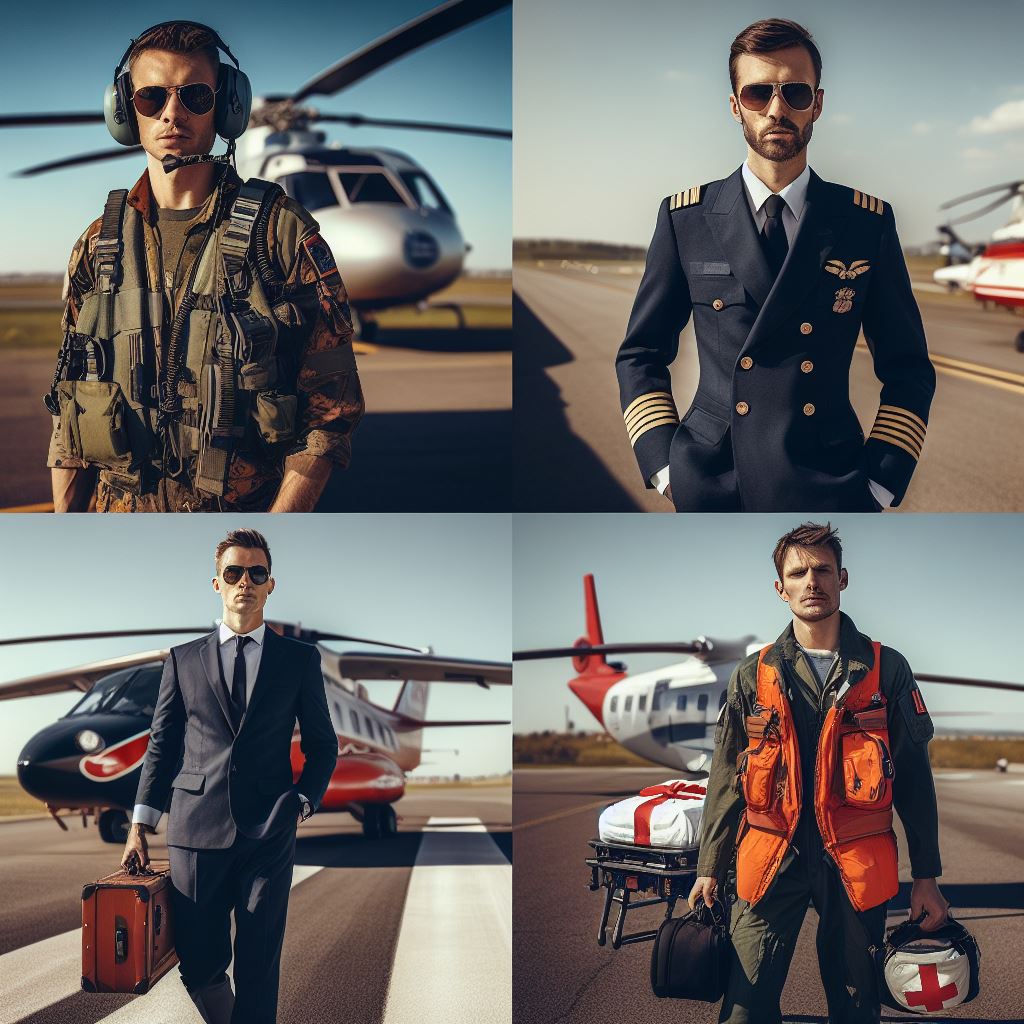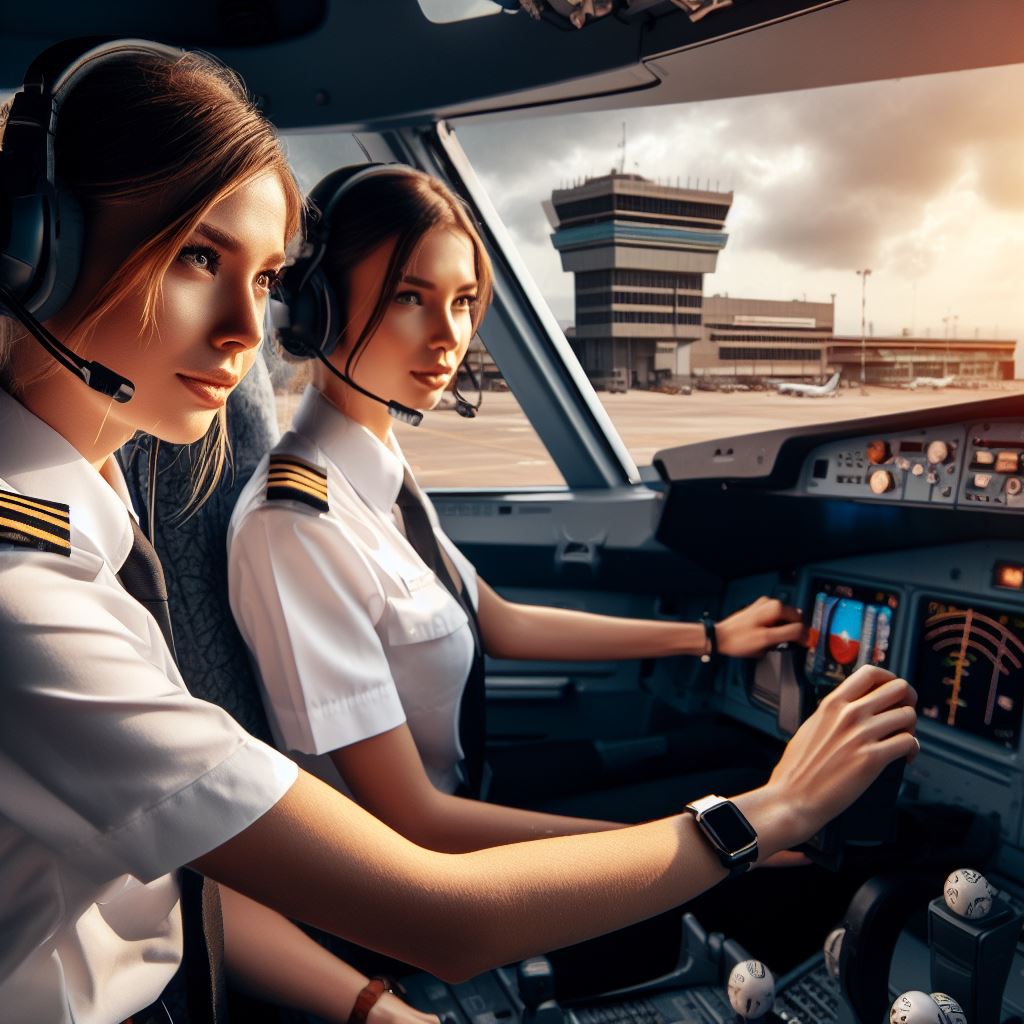Introduction
Flying careers go well beyond airlines, offering diverse opportunities for aviation enthusiasts.
Diverse aviation careers extend beyond traditional airlines, showcasing a myriad of exciting opportunities.
Pilots navigate not only commercial jets but also helicopters and private planes.
Air traffic controllers ensure safe skies, managing aircraft movements with precision.
Aviation engineers innovate cutting-edge technology for aircraft design and maintenance.
Unmanned Aerial Vehicle (UAV) operators play a crucial role in the booming drone industry.
Additionally, aerobatic pilots thrill audiences with daring maneuvers, while skydiving instructors guide adrenaline-seekers through exhilarating freefalls.
These alternative flying careers offer unique paths for individuals passionate about aviation, widening horizons beyond conventional airline roles.
It is important to consider alternative flying careers as they provide unique and fulfilling experiences.
Exploring flying careers beyond airlines is crucial for a diversified industry, offering unique opportunities and skill development.
Alternative aviation paths enhance resilience and adaptability, fostering a dynamic workforce prepared for evolving industry demands.
Pilots, air traffic controllers, and aviation engineers find fulfillment in diverse roles, contributing to innovation and progress.
Considering non-traditional avenues broadens horizons, creating a robust and versatile aviation sector.
This diversification not only enhances individual career satisfaction but also strengthens the industry’s overall capacity for growth and resilience.
As the aviation landscape evolves, professionals prepared for various roles contribute to a thriving and adaptable sector.
Embracing alternative flying careers is pivotal for a resilient, dynamic, and innovative aviation workforce.
This section will explore different flying career options: aerial photography, crop dusting, and air ambulance services.
Explore diverse flying careers-pilots mastering jets, helicopters, and private planes; air traffic controllers ensuring safety; aviation engineers driving innovation.
Discover exhilarating roles beyond conventional airline paths.
Military Aviation Careers
Overview of military aviation
- Military aviation involves the use of aircraft for various military purposes.
- It plays a crucial role in combat operations, reconnaissance missions, and providing logistical support.
- The military aviation sector offers diverse career opportunities for individuals passionate about flying.
Different flying career paths in the military
1. Fighter pilot
- Fighter pilots operate high-performance aircraft and engage in air-to-air combat.
- They are trained in aerial maneuvers, weapon systems, and intercepting enemy aircraft.
2. Helicopter pilot
- Helicopter pilots are responsible for operating helicopters in diverse military operations.
- They provide air support, conduct search and rescue missions, and transport troops in challenging environments.
3. Transport pilot
- Transport pilots specialize in flying large military cargo and personnel transport aircraft.
- They are involved in missions such as humanitarian aid, troop deployments, and equipment transportation.
Benefits and challenges of pursuing a military aviation career
Benefits
- Training and experience: Military aviation provides excellent training and valuable flight experience.
- Career progression: The military offers clear career progression paths and opportunities for advancement.
- Job security: Military aviators enjoy long-term job security and attractive benefits.
Challenges
- Rigorous training and selection process: Becoming a military aviator requires passing extensive training and selection criteria.
- High level of responsibility: Military aviators bear significant responsibility for the mission’s success and the lives of their crew.
- Frequent deployments: Military aviation careers often involve frequent deployments and time away from family.
Therefore, military aviation offers a unique and exciting avenue for individuals interested in flying beyond commercial airlines.
Transform Your Career Today
Unlock a personalized career strategy that drives real results. Get tailored advice and a roadmap designed just for you.
Start NowThe sector provides a range of career paths, including fighter pilots, helicopter pilots, and transport pilots.
Pursuing a military aviation career comes with numerous benefits, such as exceptional training, career progression, and job security.
However, it also poses challenges like rigorous training, responsibility, and frequent deployments.
Despite the challenges, military aviation remains a rewarding and fulfilling career choice for those passionate about flying.
Commercial Aviation Careers
Overview of commercial aviation industry
Commercial aviation industry encompasses various flying careers beyond the traditional airline jobs.
These careers provide exciting opportunities for pilots looking for alternatives in the aviation world.
Discussion of non-airline flying careers in commercial aviation
1. Corporate pilot
A corporate pilot works for a private company, operating their aircraft to transport executives and business personnel.
These pilots enjoy a luxurious lifestyle and often fly high-end jets.
2. Air cargo pilot
An air cargo pilot is responsible for transporting goods and packages around the world.
These pilots play a crucial role in ensuring timely deliveries and keeping global supply chains functioning.
3. Charter pilot
Charter pilots fly private jets or helicopters, catering to individuals or groups who require personalized air travel.
This career offers flexibility and the chance to explore different destinations.
Advantages and disadvantages of pursuing a commercial aviation career
When considering a commercial aviation career, it is essential to weigh the pros and cons before making a decision.
Advantages
- High earning potential: Commercial aviation careers often come with competitive salaries and opportunities for growth.
- Exciting and dynamic work environment: Flying aircraft provides an exhilarating experience and the chance to see the world from above.
- Job stability: The demand for skilled pilots in the commercial aviation industry remains strong, ensuring a stable career path.
- Networking opportunities: Working in commercial aviation opens doors to meet influential people and create valuable connections.
Disadvantages
- Extended periods away from home: Flying careers often involve long hours and frequent travel, resulting in time away from family and loved ones.
- Work-life balance challenges: Irregular schedules and time zone changes can disrupt personal life and make it difficult to maintain a routine.
- High training costs: Pursuing a commercial aviation career requires significant financial investment in obtaining licenses and certifications.
- Intense competition: The aviation industry is highly competitive, and securing a job may require persistence and patience.
Basically, commercial aviation offers a diverse range of flying careers beyond traditional airlines.
Whether you aspire to be a corporate pilot, air cargo pilot, or charter pilot, there are exciting opportunities to explore.
While these careers provide numerous advantages such as high earning potential and an exciting work environment, they also come with challenges such as time away from home and intense competition.
Ultimately, the decision to pursue a commercial aviation career depends on individual preferences and priorities.
Read: Facing Challenges: Mental Health in the Trucking Industry
Emergency Services Aviation Careers
Overview of emergency services aviation sector
Emergency services aviation plays a crucial role in saving lives during critical situations.
Showcase Your Business Today
Reach thousands of readers actively exploring professional services. Publish your business profile and grow your audience now.
Publish NowIt involves various flying career options focused on providing immediate assistance to those in need.
Different flying career options in emergency services
- Air ambulance pilot: These pilots transport patients who require immediate medical attention to hospitals or specialized medical facilities.
- Firefighting pilot: These pilots combat wildfires by dropping fire retardant or water from the air to control and extinguish flames.
- Search and rescue pilot: These pilots assist in locating and rescuing individuals in distress, often in remote or hazardous environments.
Unique aspects of emergency services aviation careers
Emergency services aviation careers come with unique challenges and rewards that set them apart from other flying professions.
Firstly, these pilots often work in high-pressure situations where quick decision-making and precise execution are critical.
They need to remain calm and focused to protect lives and property.
Secondly, emergency services aviation pilots must possess exceptional flying skills and knowledge of specialized equipment used in their respective fields.
Understanding advanced navigation systems and rescue techniques is essential for success.
Moreover, emergency services aviation careers require pilots to have excellent teamwork and communication skills.
They often collaborate with ground crews, medical personnel, and other emergency responders to ensure effective coordination during missions.
Additionally, these careers offer pilots the opportunity to make a direct impact on people’s lives.
Being able to save lives and contribute to the well-being of others can be highly fulfilling and rewarding.
Furthermore, emergency services aviation pilots need to be adaptable and flexible.
They may be called upon to work in various weather conditions and challenging environments, such as mountains or dense forests.
Lastly, emergency services aviation careers provide pilots with opportunities for continuous learning and personal growth.
They can acquire specialized training and certifications to enhance their skills and advance their careers.
Essentially, the emergency services aviation sector offers diverse career options, including air ambulance, firefighting, and search and rescue piloting.
These careers require individuals with exceptional flying skills, quick decision-making abilities, and a desire to make a difference in the lives of others.
Despite the challenges, the unique aspects of emergency services aviation make it a highly fulfilling and rewarding profession.
Read: Facing Challenges: Mental Health in the Trucking Industry

Agricultural Aviation Careers
Overview of agricultural aviation
Agricultural aviation involves the use of aircraft for various activities related to farming and crop management.
Discussion of flying career opportunities in the agricultural sector
- Crop dusting pilot: This position entails flying low and spraying crops with fertilizers or pesticides to ensure optimum growth.
- Seed planting pilot: A seed planting pilot is responsible for distributing seeds over large areas of land using specialized equipment attached to their aircraft.
Potential benefits and challenges in pursuing agricultural aviation careers
Agricultural aviation careers offer several advantages, but they also come with certain challenges.
Benefits
- Unique flying experience: Flying at a low altitude and maneuvering through fields provide pilots with a thrilling and distinctive flying experience.
- Varied work environment: Agricultural pilots get to work in diverse locations and encounter different agricultural landscapes.
- Contribution to food production: By supporting crop health and ensuring proper seed distribution, these pilots play a crucial role in food production.
Challenges
- Seasonal nature of work: Agricultural aviation is heavily dependent on planting and harvesting seasons, which can lead to periods of inactivity.
- Weather sensitivity: Unfavorable weather conditions, such as strong winds, fog, or rain, can limit operations and affect the pilot’s schedule.
- Risk and safety concerns: Flying low and close to obstacles introduces a higher level of risk, requiring pilots to be extremely cautious and skilled.
Despite the challenges, agricultural aviation careers can be highly rewarding for those passionate about flying and agriculture.
These roles offer a unique opportunity to combine both interests and make a tangible impact on the farming industry.
In fact, agricultural aviation presents a range of flying career options beyond traditional airlines.
Crop dusting pilots and seed planting pilots play essential roles in ensuring crop health and proper seed distribution.
While pursuing agricultural aviation careers may come with challenges such as seasonal work and safety concerns, the unique experiences, varied work environments, and contribution to the food production process make them attractive options for aviation enthusiasts passionate about farming.
Read: Women in Trucking: Breaking Barriers in a Male-Dominated Field
Learn More: Truck Driver Health: Staying Fit on the Road
Recreational Aviation Careers
Introduction to Recreational Aviation
Recreational aviation offers exhilarating options beyond traditional airline careers.
Exploring different flying careers in recreational aviation reveals a world of adventure and excitement.
Whether it’s teaching aspiring pilots as a flight instructor, performing thrilling aerial maneuvers as an aerobatic pilot, or gliding silently through the skies as a glider pilot, there are various paths to pursue within this industry.
To embark on a successful recreational aviation career, several critical factors need to be considered. First and foremost, passion for flying is paramount.
A deep love for aviation fuels the drive and dedication needed to excel in this field.
Additionally, obtaining the necessary licenses, certifications, and training is crucial for professional growth and credibility.
Exploration of flying career options in recreational aviation
- It’s important to acknowledge that some recreational aviation activities involve higher levels of risk.
- Aerobatic pilots, for example, must be comfortable with the inherent dangers of performing precision maneuvers at high speeds.
- Therefore, risk tolerance is an important factor to consider when choosing a career in recreational aviation.
Factors to consider when pursuing a career in recreational aviation
Financial aspects should also be taken into account. Pursuing a career in recreational aviation often requires a significant financial investment.
Costs can include training fees, purchasing or renting aircraft and equipment, and obtaining insurance coverage.
Lifestyle considerations are another factor to contemplate.
Some recreational flying careers, such as being a flight instructor, involve irregular working hours and travel.
Prospective aviators should evaluate if the lifestyle demands of their chosen career align with their personal preferences.
Physical fitness is another crucial aspect.
Depending on the chosen flying career, certain physical requirements and medical examinations must be met to ensure one’s ability to safely operate an aircraft.
Showcase Your Business Today
Reach thousands of readers actively exploring professional services. Publish your business profile and grow your audience now.
Publish NowConsidering career opportunities and growth potential within the recreational aviation industry is essential.
Researching the demand and potential for advancement in a chosen field can guide individuals toward long-term success.
Networking and connections play a vital role in any career path, including recreational aviation.
Building relationships with fellow aviators and professionals within the industry opens doors to opportunities and expands one’s knowledge and support system.
Finally, personal goals and aspirations should be evaluated. Individuals must reflect on how a career in recreational aviation aligns with their long-term vision and aspirations.
By thoroughly assessing these factors, individuals can make informed decisions when pursuing a career in recreational aviation.
With the right dedication, passion, and preparation, a thrilling and fulfilling career awaits in this exciting industry.
Read: The Environmental Impact of Trucking in the US
Conclusion
We have explored various flying careers beyond the traditional airline industry.
We have discussed the opportunities in aerial photography, crop dusting, firefighting, and air ambulance services.
Each of these careers offers unique experiences and challenges that can be rewarding for those who pursue them.
It is important to consider the wide range of options available beyond airlines.
Exploring different flying careers can open up new possibilities and allow individuals to find their true passion in the aviation industry.
When it comes to finding the right path in the flying industry, it is essential to evaluate personal interests, skills, and goals.
Reflecting on what drives you and what you enjoy most about flying will help guide you towards the perfect career fit.
Whether it is capturing breathtaking aerial images, helping in emergency medical situations, or protecting forests from wildfires, the world of flying offers endless opportunities to make a difference while doing what you love.
So, as you embark on your journey to explore different flying careers, remember to keep an open mind, think beyond the airlines, and embrace the excitement of discovering the perfect flying path for you.
Good luck, and may the skies be your playground as you soar towards a fulfilling career in the flying industry!
[E-Books for Sale]
The Big Book of 500 High-Paying Jobs in America: Unlock Your Earning Potential
$19.99 • 500 High-Paying Jobs • 330 pages
Explore 500 high-paying jobs in America and learn how to boost your career, earn more, and achieve success!
See All 500 High-Paying Jobs of this E-Book
1001 Professions Without a Degree: High-Paying American Jobs You Can Start Now
$19.99 • 1001 Professions Without a Degree • 174 pages
Discover 1001 high-paying jobs without a degree! Unlock career tips, skills, and success strategies for just $19.99!




